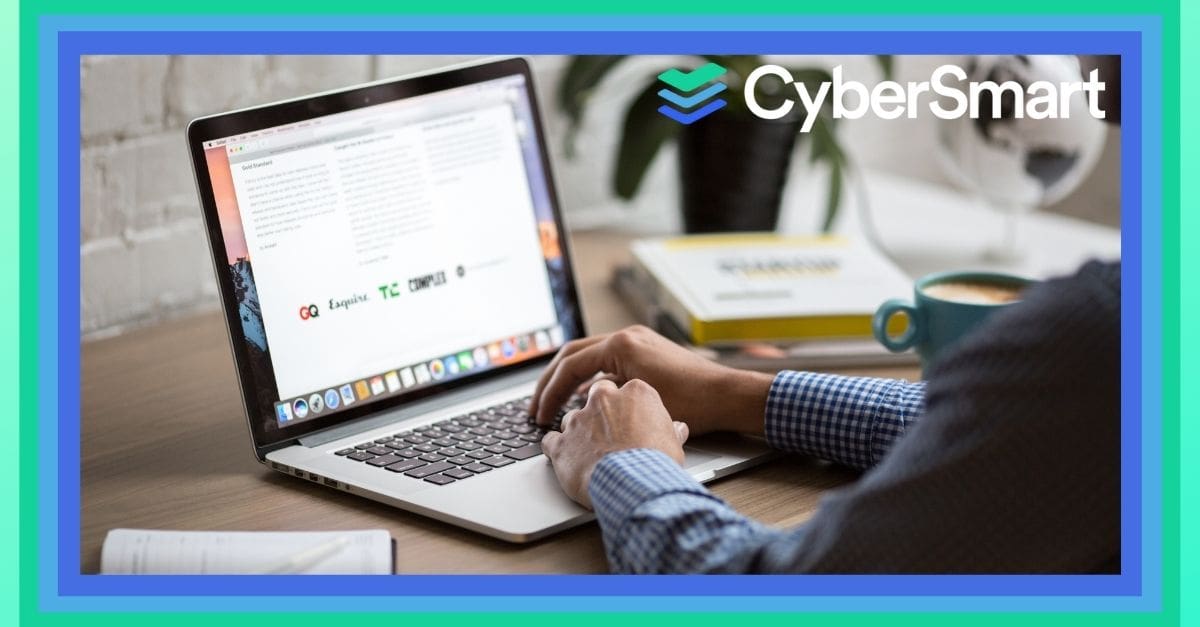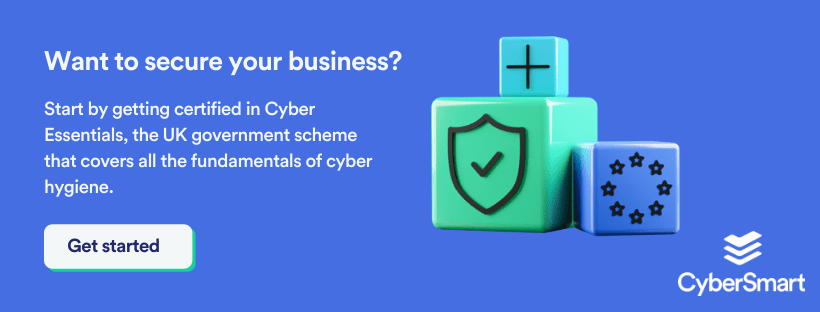Most of us have heard of encryption. It’s that recipe for secrecy that techy types talk about all the time. But for many of us, that’s where the knowledge ends.
However, for small businesses looking to improve cybersecurity, encryption can be a vital weapon in your arsenal- and one that isn’t so hard to understand. Here’s a simple explanation of what encryption is, why you need it, and when to use it.
What is encryption?
Although encryption, much like ‘the blockchain’, can seem like another one of those unfathomable technical terms, it’s actually pretty simple.
Encryption is most commonly used to protect data in transit and at rest. Ever sent a Facebook Messenger or WhatsApp message? That uses encryption. Or, a payment using online banking? Also encryption. How about buying something from a web store? You guessed it, encryption again.
You get the picture. Encryption is used everywhere in our daily lives, but how does it work?
In non-technical terms, encryption is a way of randomising data so that only an authorised recipient can understand the information. Encryption converts plaintext – for example, the text in an email between you and a colleague – and converts it into ciphertext, a string of random numbers and letters. To unlock the real message or data, you need an encryption key, which is a set of mathematical values that only the sender and the recipient of the message know, like so:

Photo PixelPrivacy
The principle is much the same as a password, but better (as we’ll see).
Why does your business need it?
So we’ve covered, in very simple terms, what encryption is. The next question is why should SMEs be using it? It’s easy to assume that if you’re not a huge multinational, processing reams of sensitive information, that your standard security tools such as firewalls and secure passwords are enough to protect your data. However, there are three key reasons why this isn’t the case.
Cyber attacks are on the rise
It’s likely not news to you that cybersecurity threats to SMEs are on the rise. Barely a week goes by without another news story or set of figures released to that effect. Indeed, the Federation of Small Businesses estimates that SMEs are collectively subject to almost 10,000 cyber-attacks a day.
A recent report from cybersecurity experts, Malwarebytes, reveals that detections of new malware continue to increase by 1% year-on-year.
A big part of the problem is the ever-increasing volume and variety of malware out there. A recent report from cybersecurity experts, Malwarebytes, reveals that detections of new malware continue to increase by 1% year-on-year. This might not sound like much, but when we’re talking about detections in the tens of millions, it soon adds up.
In this environment, it’s getting harder and harder to stay ahead of the threat. However, adopting encryption can act as a strong second line of defence. For instance, someone in your organisation accidentally clicks on a malware link in an email (something we’ve all done at least once), potentially exposing your data to an attacker. Using encryption means that they won’t be able to read whatever they find without a key, meaning your data is safe.
You’re using a cloud service
Cloud computing is now a vital part of the daily operations of most SMEs. And if you’re doing business entirely in the cloud, and don’t store any sensitive data on employees’ devices, you’re safe, right? After all, the likes of Amazon, Google, and Microsoft spend billions of dollars a year on the security of their cloud services.
Unfortunately, this is only partly true. Obviously storing your data in a cloud is far better than having everything on vulnerable systems, but that doesn’t mean it’s entirely safe.
To give an example, let’s say you use a cloud-based platform like Office 365 for your everyday operations. A would-be hacker can still intercept your data as it moves between your device and the cloud. As we’ve already mentioned, this is unlikely if you’re working with a reputable cloud provider, but it’s not impossible or even that uncommon. Using strong encryption can help protect you against this by adding another layer of defence.
Passwords aren’t the be-all and end-all
Now, you may be thinking ‘but my business has a clear password protection policy and we regularly change our passwords for laptops and devices, surely that’s enough?’
Not quite. While it’s true that a strong security policy can help protect your business against regular theft and even less sophisticated cyberattacks, it’s not enough to protect you from the really harmful stuff.
Hackers are always finding a way around even the strictest security policies and new methods for cracking passwords appear all the time. To be totally sure, you need an a solution that allows you to completely encode everything on your device. This means that even in the event someone does manage to break in, all they’ll be able to extract is random gobbledegook that’s little use to anyone without the right encryption key.
How do you use encryption?
Finally, let’s take a look at how you can use encryption to protect your business. Encryption can take many forms. How you use it will depend on what you need it for, but some common uses include:
End-to-end encryption – This guarantees data sent between two parties cannot be viewed by anyone else. Most of the internal communication tools such as Slack or Google Hangouts will come with this as standard, but it’s worth checking whichever messaging tool you use.
Cloud storage encryption – A service offered by cloud storage providers that transforms your data or text using an algorithm and stores it safely in the cloud.
Encryption as a Service (EaaS) – EaaS represents the next step up from cloud storage encryption. It’s the perfect tool for small businesses who want to use encryption but lack the resources to do manage it themselves. EaaS subscription models typically include full-disk, database, and file encryption.
Of course, these are far from the only uses of encryption. You can also use it to protect certain fields on your website, encrypt everything leaving or entering your web server and a hundred other things besides. The above are just the most common applications for SMEs.
Data is more important than ever to SMEs. In fact, in our data-driven economy, it’s often the most valuable asset a business possesses. Basic cyber-hygiene such as encryption can go a long way towards helping you protect it.
Show your customers you value their data by getting certified in Cyber Essentials, the UK government scheme that covers all the fundamentals of cyber hygiene.





